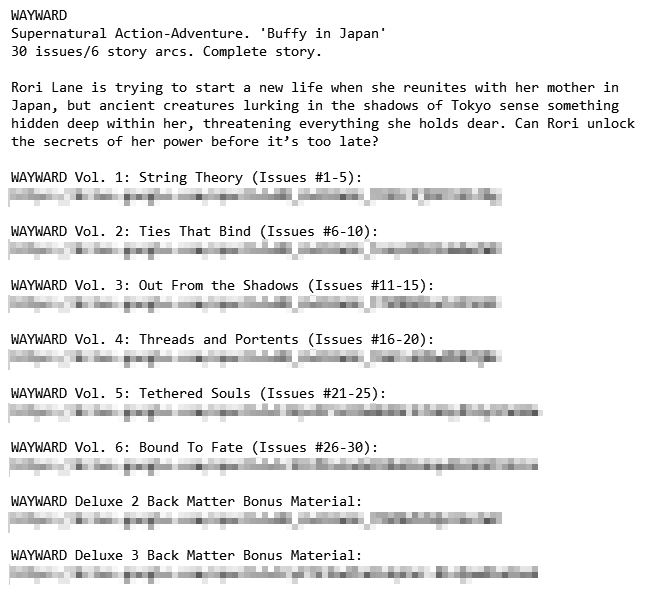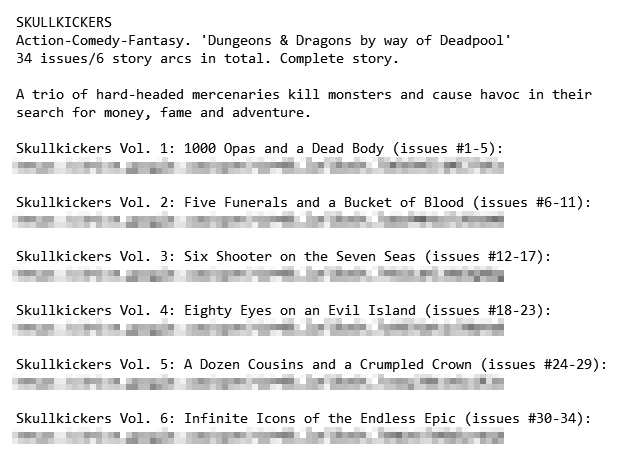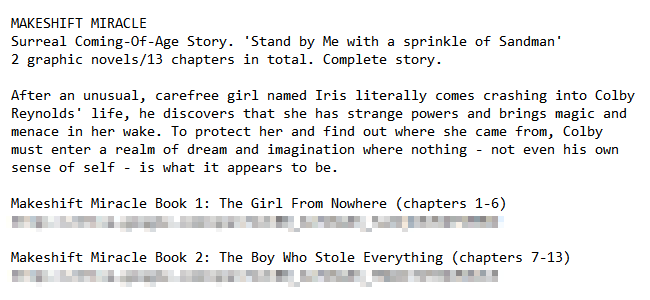Artists: Let& #39;s talk about portfolios.
In simplest terms, in order for you to get work doing art for other people, you need a portfolio that grabs attention and gives potential clients a clear path for contacting you.
It& #39;s that easy and that difficult.
In simplest terms, in order for you to get work doing art for other people, you need a portfolio that grabs attention and gives potential clients a clear path for contacting you.
It& #39;s that easy and that difficult.
A portfolio is _not_ just a social media feed or a blog.
It& #39;s _not_ a gallery/archive of everything you& #39;ve ever done.
Focus and clarity are key. Don& #39;t make it hard for people to figure out what you do or how they can hire you to do it for them.
It& #39;s _not_ a gallery/archive of everything you& #39;ve ever done.
Focus and clarity are key. Don& #39;t make it hard for people to figure out what you do or how they can hire you to do it for them.
An online portfolio is ideally something you control that’s not platform dependent (Twitter, Instagram, Tumblr, etc.)
Social media for showing off work is fine, but they& #39;re _not_ a portfolio.
Platforms and tastes change.
Don’t be dependent on one source for your outreach.
Social media for showing off work is fine, but they& #39;re _not_ a portfolio.
Platforms and tastes change.
Don’t be dependent on one source for your outreach.
If you have pro work, great, but _don’t_ put that in your portfolio unless it& #39;s the kind of work you want to continue doing.
It& #39;s better to create new work focused on your goals than showcase a grab bag of old work that doesn& #39;t reflect what you want.
It& #39;s better to create new work focused on your goals than showcase a grab bag of old work that doesn& #39;t reflect what you want.
Same with school assignments. I see a lot of students who post everything they’ve done because they don& #39;t have enough work to curate yet.
I understand the desire to show your progress and new skills but, again, that’s _not_ a portfolio. It& #39;s not ready for soliciting paying work
I understand the desire to show your progress and new skills but, again, that’s _not_ a portfolio. It& #39;s not ready for soliciting paying work
Focus is crucial when it comes to your portfolio.
The work you show is the impression you create. It tells a potential client what you can do for them.
You need to make a statement, make it clear you& #39;re good at what you do, and wrap it up before you wear out your welcome.
The work you show is the impression you create. It tells a potential client what you can do for them.
You need to make a statement, make it clear you& #39;re good at what you do, and wrap it up before you wear out your welcome.
8-12 well chosen pieces in a portfolio is generally all you need.
Less or more might work, but can leave an impression of inexperience or just too much to get their head around.
Better to have them dig into your social media for more examples than overwhelm them right away.
Less or more might work, but can leave an impression of inexperience or just too much to get their head around.
Better to have them dig into your social media for more examples than overwhelm them right away.
Everything in your portfolio should be FINISHED work. Save sketchbook-incomplete stuff for blog/social media.
Show progression-steps of completed pieces if you want, but nothing incomplete goes in the portfolio.
If you don& #39;t have 8+ finished pieces worth showing, keep building
Show progression-steps of completed pieces if you want, but nothing incomplete goes in the portfolio.
If you don& #39;t have 8+ finished pieces worth showing, keep building
Descriptions of what the work is, how it was created, and how it was used can be nice to give added context, but you don& #39;t need reams of explanation or background text and can& #39;t assume clients will read any of it.
A good portfolio is something you spend a lot of time on and continually curate at the start but then, over time, if you begin getting work and building up your client base, you’ll find it becomes less useful/less important.
Your contacts and reputation take over.
Your contacts and reputation take over.
BUT, when things slow down or you want to pivot to other creative areas, you& #39;ll go back to that portfolio, trim the weeds that have grown in your absence, and start the process over again.
A portfolio is a snapshot of who you are and your creative goals right now.
The animation portfolio I had at age 20 is vastly different from the illustration portfolio at 25, the teaching CV at 30, or the writing site I have now in my 40& #39;s.
The creative road winds on.
The animation portfolio I had at age 20 is vastly different from the illustration portfolio at 25, the teaching CV at 30, or the writing site I have now in my 40& #39;s.
The creative road winds on.
If you& #39;re looking for work and your portfolio is ready, the internet can work a bit of magic.
Any post you make, industry-related or not, can lead people back to your portfolio and turn into potential opportunities you never imagined.
Any post you make, industry-related or not, can lead people back to your portfolio and turn into potential opportunities you never imagined.
Put that portfolio link prominently in your social media profiles, your email signature, and watermark it on pieces you post online in case anything goes viral.
Simple and clear
http://www.jimzub.com"> http://www.jimzub.com
is better than
artkabob(dot)art/myartstuff/artartart/portfolio/
Simple and clear
http://www.jimzub.com"> http://www.jimzub.com
is better than
artkabob(dot)art/myartstuff/artartart/portfolio/
I can& #39;t tell you the number of times I& #39;ve seen incredible art online and had to hunt high and low to figure out who did it or how to contact them.
I want to work with amazing people.
Editors and art directors want to find great new collaborators.
Give them the tools to hire you.
I want to work with amazing people.
Editors and art directors want to find great new collaborators.
Give them the tools to hire you.
All the above advice applies to writers, designers, animators, cartographers, musicians, actors, voice actors, you name it.
A landing page that clearly shows what you want to be hired to do, has a tight selection of pro quality examples, and easy to find contact info.
A landing page that clearly shows what you want to be hired to do, has a tight selection of pro quality examples, and easy to find contact info.
Again, this stuff will grow and change.
I don& #39;t currently need a portfolio, so my site is a catch-all of info about my writing, promotion for projects, and tutorials to help demystify the writing process and industry.
It& #39;s a showcase that "sells" me via my established work.
I don& #39;t currently need a portfolio, so my site is a catch-all of info about my writing, promotion for projects, and tutorials to help demystify the writing process and industry.
It& #39;s a showcase that "sells" me via my established work.
BUT, I also have a hidden landing page and Google Drive links to sample PDFs of my work I can send potential new clients or show off creator-owned projects when I& #39;m trying to sell that stuff into other media.
The portfolio exists, it& #39;s just not public-facing right now.
The portfolio exists, it& #39;s just not public-facing right now.
I also have bite-sized summary text and review PDFs of my creator-owned projects in a text file that I can cut and paste into an email at a moment& #39;s notice.
(URLs hidden in the attached examples)
(URLs hidden in the attached examples)
Thanks for the kind words and shares.
Happy this advice hit the spot for a lot of you.
If I get time I& #39;ll try to pull this together into an article on
http://www.jimzub.com/category/tutorial/">https://www.jimzub.com/category/...
Happy this advice hit the spot for a lot of you.
If I get time I& #39;ll try to pull this together into an article on
http://www.jimzub.com/category/tutorial/">https://www.jimzub.com/category/...

 Read on Twitter
Read on Twitter





